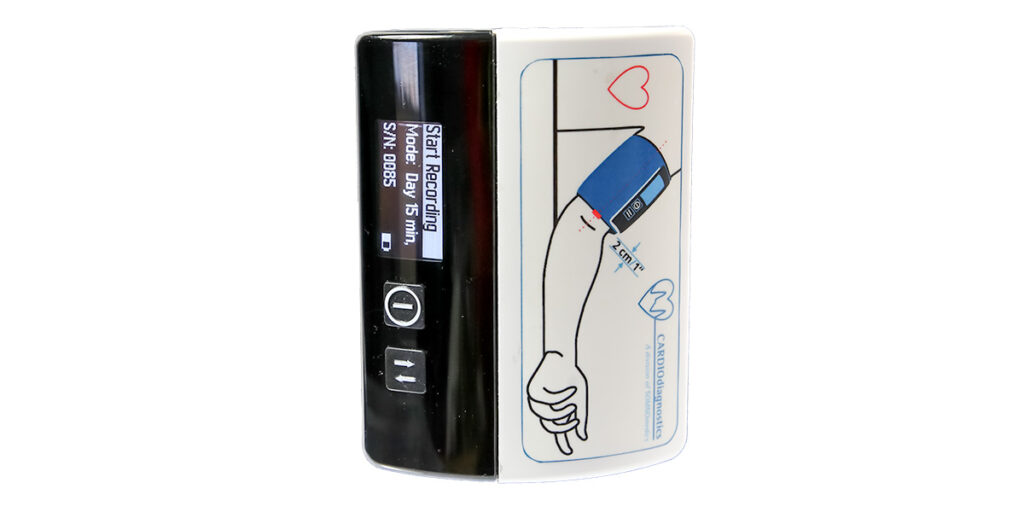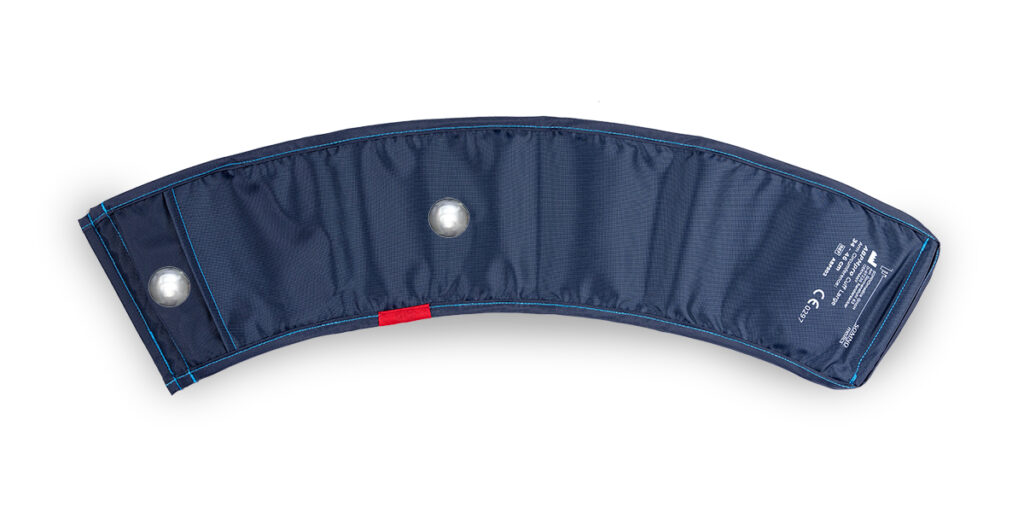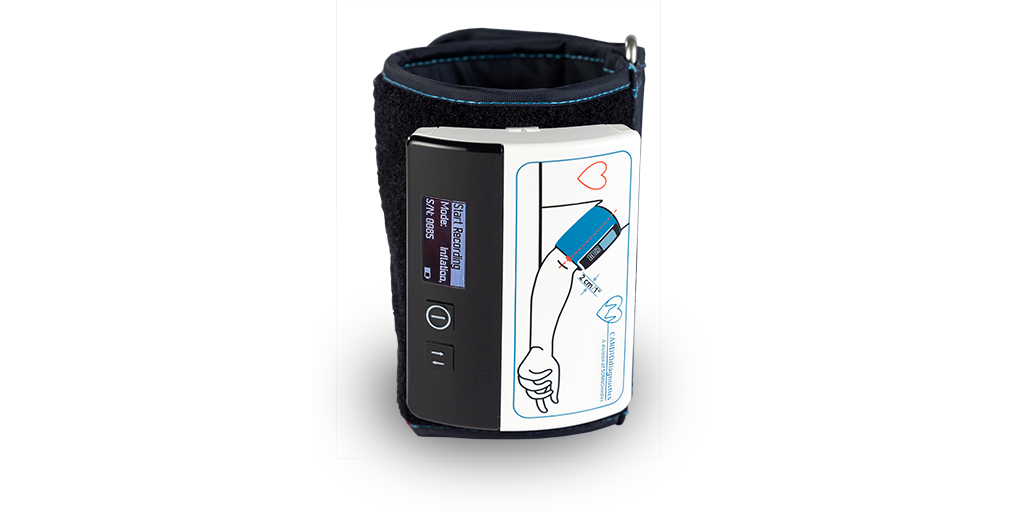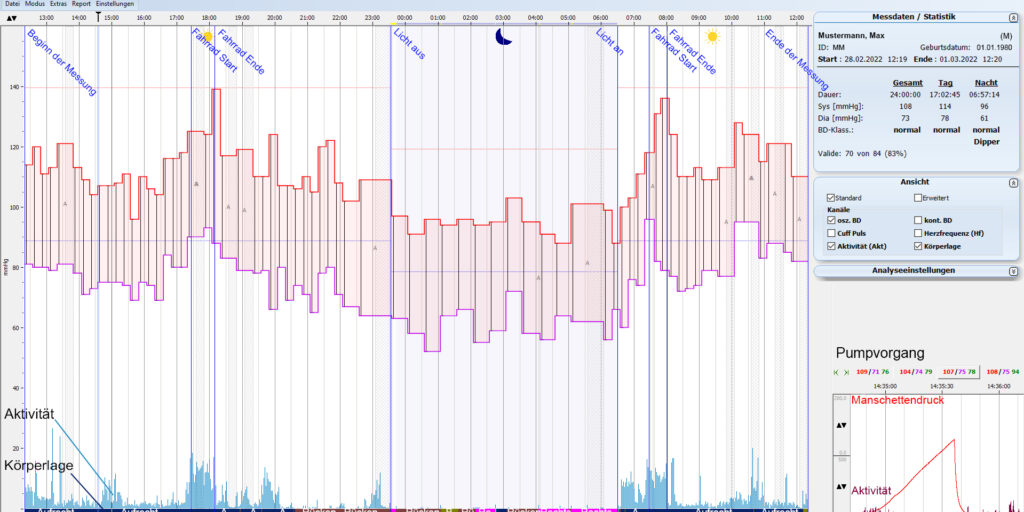Today on World Hypertension Day, the World Hypertension League is raising awareness that a reliable assessment of blood pressure requires above all long-term recordings and high accuracy during measurements to assess the values correctly and to regain control over the patients’ blood pressure. Common phenomena like white-coat hypertension can only be ruled out with long-term measurements over 24 hours. Long-term measurements also allow masked hypertension to be detected and show the daily course of blood pressure as well as the physiological nocturnal drop (dipping behaviour)[2].
Oscillometric measurement using a blood pressure cuff is considered the gold standard. Nevertheless, this process comes with several methodological limitations that can influence the classification of hypertension and dipping. For example, the measurement should be performed in an upright position and at rest, because motor activity during the measurement can lead to false readings. A recent study showed that 26% of the readings from 24-hour measurements were affected by artefacts (movement, faulty inflation, cardiovascular arousals, and arrhythmias) and this led to incorrect classification of hypertension severity in 23% of cases and incorrect dipping classification in 24% [3]. Also, measuring in the upright position is not always feasible in a long-term measurement, which means that the blood pressure values in the supine position can be distorted by the hydrostatic pressure if using oscillometric devices.




